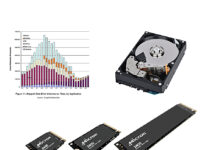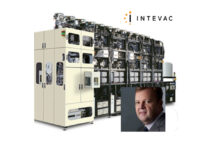Dell Technologies has spruced up the VxRail hyperconverged line-up with AMD EPYC processor options brought in to P Series performance-intensive configurations.
The new all-flash P675F and hybrid flash-disk P675N have a 2U chassis and support Nvidia Tesla T4 and V100S GPUs, which provide more power for intensive workloads such as AI, data analytics, deep learning, and high performance computing.

Nancy Hurley, Dell’s senior manager CI/HCI product marketing, said in a blog post that the P Series chassis enables larger PSU options to allow a broader range of CPU offerings, larger memory configurations, and additional PCIe cards compared to the E Series EPYC systems. Dell introduced EPYC options for the E Series in June 2020.
There are six VxRail product families:
- E Series – 1U/1Node with an all-NVMe option and T4 GPUs for use cases including artificial intelligence and machine learning. AMD EPYC processor and PCIe Gen 4 config available.
- P Series – Performance-intensive 2U/1Node platform with an all NVMe option, configurable with 1, 2 or 4 sockets optimised for intensive workloads such as databases
- V Series – VDI-optimised 2U/1Node platform with GPU hardware for graphics-intensive desktops and workloads
- S Series – Storage dense 2U/1Node platform for applications such as virtualized SharePoint, Exchange, big data, analytics and video surveillance
- G Series – Compute dense 2U/4Node platforms for general purpose workloads.
- D Series – ruggedised 1U short depth – 20-inch – box in all-flash [SAS SSD] and hybrid SDD/disk versions.
VxRail systems support Optane Persistent Memory DIMMs, as well as Optane SSDs, also Nvidia Quadro RTX GPUs and vCPUs to accelerate rendering, AI, and graphics workloads. The new P-Series should go faster still with these workloads.
A VxRail 7.0.130 software update adds support for Intel’s x710 NIC Enhanced Network Stack (ENS) driver. This driver can dynamically prioritise network traffic to support particular workloads. A new feature enables system health runs to use the latest set of health checks whenever they are made available. There is also a support procedure to expand a 2-node ROBO VxRail configuration to a 3-or-more-node cluster








